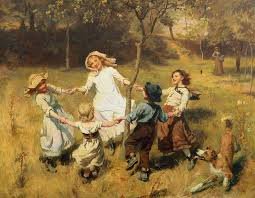
In 1665 at the height of the worst disaster in human terms, a little village in Derbyshire and its inhabitants was set to become famous for their self-sacrificing selfless act of humanity.
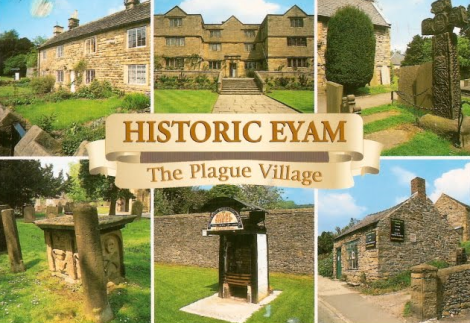
A tailor ordered a bolt of cloth and it arrived from London. The flea-infested fabric caused havoc. Within a week, George Vicars, the Tailor’s assistant had died and the rest of that household quickly followed. The plague died down over the winter but come the spring, it took hold once more, with devastating consequences.
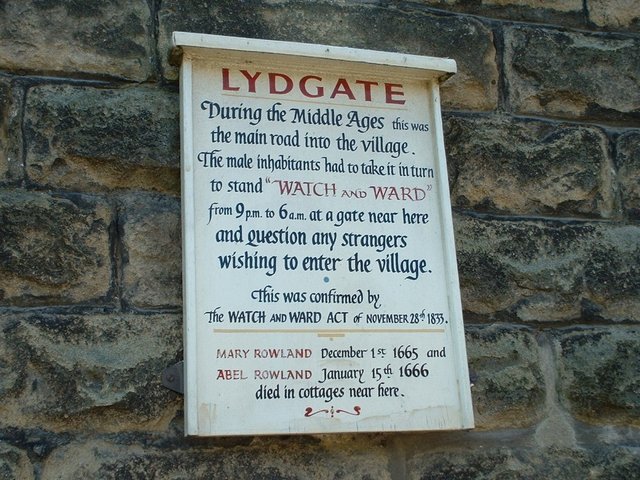
This isn’t a tale of woe, however. Yes it’s unbearably tragic that so many lost their lives in that village, but it was the same the country-over – so many people died that skills were lost, artisans didn’t survive long enough to complete the training of their apprentices – the apprentices didn’t survive long enough to complete their training and every-day skills were gone.

Not because of the devil alighting on the spire, wrapping his tail around it and twisting it, more likely was the fact that the knowledge of building such spires died with the artisans and craftsmen in the plague of 1665/6.
The spire twists and warps in extremes of hot and cold weather
The villagers of Eyam buried their dead as a family – keeping themselves separate from others so as not to spread the infection. More than that, though, their religious leaders the Reverend William Mompesson, and the Puritan Minister Thomas Stanley introduced precautions to slow the spread of the disease. Mompesson’s children were sent away to Sheffield just before the quarantine was set. He had begged his wife to go too, but she stayed with him and died just before the plague ended.
Church services were conducted in the open air so families could stay away from other families.
And they shut-down the whole village. No one was allowed in or out of Eyam and you might wonder how they survived without supplies, a tale from my schooldays springs to mind. The villagers soaked money in vinegar and they put the coin to pay for the necessary supplies at the Coolstone. Merchants left their wares and took their payment from there.
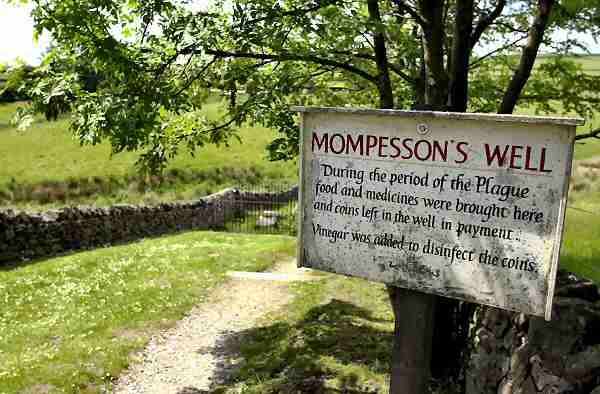
A stroke of genius whichever way you look at it and it probably saved a lot of lives. 83 villagers survived the plague out of 350.
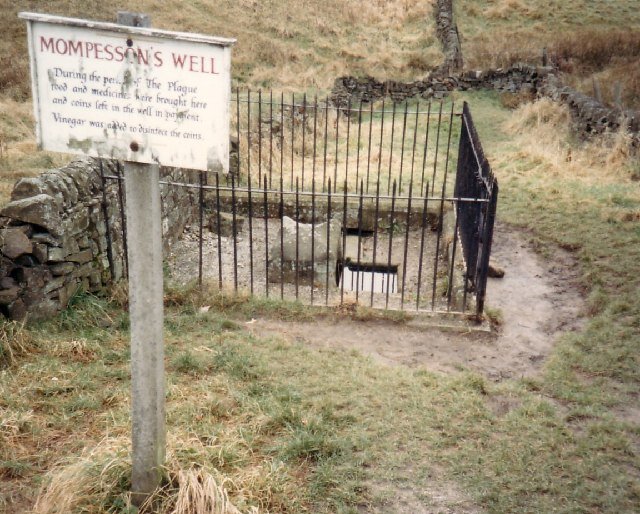
Elizabeth Hancock was uninfected despite burying six children and her husband in eight days (the graves are known as the Riley graves after the farm where they lived). The unofficial village gravedigger, Marshall Howe, also survived despite handling many infected bodies. Source
Plague Sunday has been celebrated in the village since the plague's bicentenary in 1866 and now takes place in Cucklett Delph on the last Sunday in August.
I was always under the impression this rhyme was connected to the plague:
Ring-a-ring o' roses,
A pocket full of posies,
A-tishoo! A-tishoo!
We all fall down.
And we used to sing:
Ashes in the water,
Ashes in the sea,
Please pull me up
By a one, two, three.
Pictures from Google
Wow. So sad. Sometimes there is hell on earth...
Downvoting a post can decrease pending rewards and make it less visible. Common reasons:
Submit
Yes, terrible to watch friends and family succumb to such a disease.
Downvoting a post can decrease pending rewards and make it less visible. Common reasons:
Submit
I visited the village as a child and it's eerie in places. I believe it's supposed to be extremely haunted.
Downvoting a post can decrease pending rewards and make it less visible. Common reasons:
Submit
Hi there, @writesteem Very educational post. We are from The Curator. (A Magazine style post on Steemit) We do curating for creative, informative, & entertaining. yet undervalued posts. We love your fantastic post. And we feel that it is undervalued. We would like to share it in our magazine. But first, we would like to ask for your permission to add your post to our next issue, With a picture from your post, that we will use as a thumbnail, And we will share some of the post gifts with those posts that we share in that issue. If you agree to this. Please let us know below this comment. At your earliest convenience.
Thank you. (The Curator)
And keep on steeming your interesting & knowledgeable posts.
Downvoting a post can decrease pending rewards and make it less visible. Common reasons:
Submit
Sure, feel free to use it, (with the link, I presume?)
Good Luck, I've followed you.
Downvoting a post can decrease pending rewards and make it less visible. Common reasons:
Submit
Hi again, @writesteem Yes, with the link. Thank you so much. For allowing us to share your wonderful and educational post.
PostHuntress @the-curator
Downvoting a post can decrease pending rewards and make it less visible. Common reasons:
Submit
I believe you are correct about the poem. The bubonic plague was caused by rats and mice carrying the bacteria, then biting humans and passing the disease on. Not many places escaped the plague...
Downvoting a post can decrease pending rewards and make it less visible. Common reasons:
Submit
No, it was the fleas on black rats (not brown rats) that carried the plague.
The poem has been debated whether it's anything to do with the plague or not. Personally, I'd like to think it was connected :)
Downvoting a post can decrease pending rewards and make it less visible. Common reasons:
Submit
That's right. The tailor purchased a bolt of cloth infested with the fleas.
Downvoting a post can decrease pending rewards and make it less visible. Common reasons:
Submit
Thank you. I stand corrected. I need to refresh my history. :)
Downvoting a post can decrease pending rewards and make it less visible. Common reasons:
Submit
It's really sobering to consider what it would be like to survive after 75% of the people you knew had died.
One of my favorite all-time reads was Doomsday Book by Connie Willis. It's a time-travel story involving a village much like the Eyam you just described. For all I know it could have been based on Eyam but as you say these events occurred in village after village. Have you read it?
I never heard of the twisted spire before!
Downvoting a post can decrease pending rewards and make it less visible. Common reasons:
Submit
I've not read that book, no.
It's the 'Crooked Spire' in Chesterfield, a large market-town in Derbyshire.
Downvoting a post can decrease pending rewards and make it less visible. Common reasons:
Submit
I alwas forget about the fleas being the carries of the bacteria. Cats and dogs might have spreaded it too! I am curious about the survivors, though.
Thank you for this post and the images :)
Downvoting a post can decrease pending rewards and make it less visible. Common reasons:
Submit
You're welcome, thanks for reading and commenting.
Dogs and cats were believed to be carriers, so the Mayor of London ordered that they be killed. Unfortunately, they were actually helping with the eradication of the black rats on which the fleas were carried.
Once the dogs and cats were gone, the black rat population exploded and the plague took hold worse than before.
Notice it's only black rats that carry the plague-fleas.
Downvoting a post can decrease pending rewards and make it less visible. Common reasons:
Submit
Thank you :))
Downvoting a post can decrease pending rewards and make it less visible. Common reasons:
Submit
You're welcome. :)
Downvoting a post can decrease pending rewards and make it less visible. Common reasons:
Submit
Very interesting regarding the plague.
That looks like the famous St Mary's Church in Chesterfield with the landmark Twisted spire.
Downvoting a post can decrease pending rewards and make it less visible. Common reasons:
Submit
Thank you and yes, you're right, that's the Crooked Spire in Chesterfield :)
Downvoting a post can decrease pending rewards and make it less visible. Common reasons:
Submit